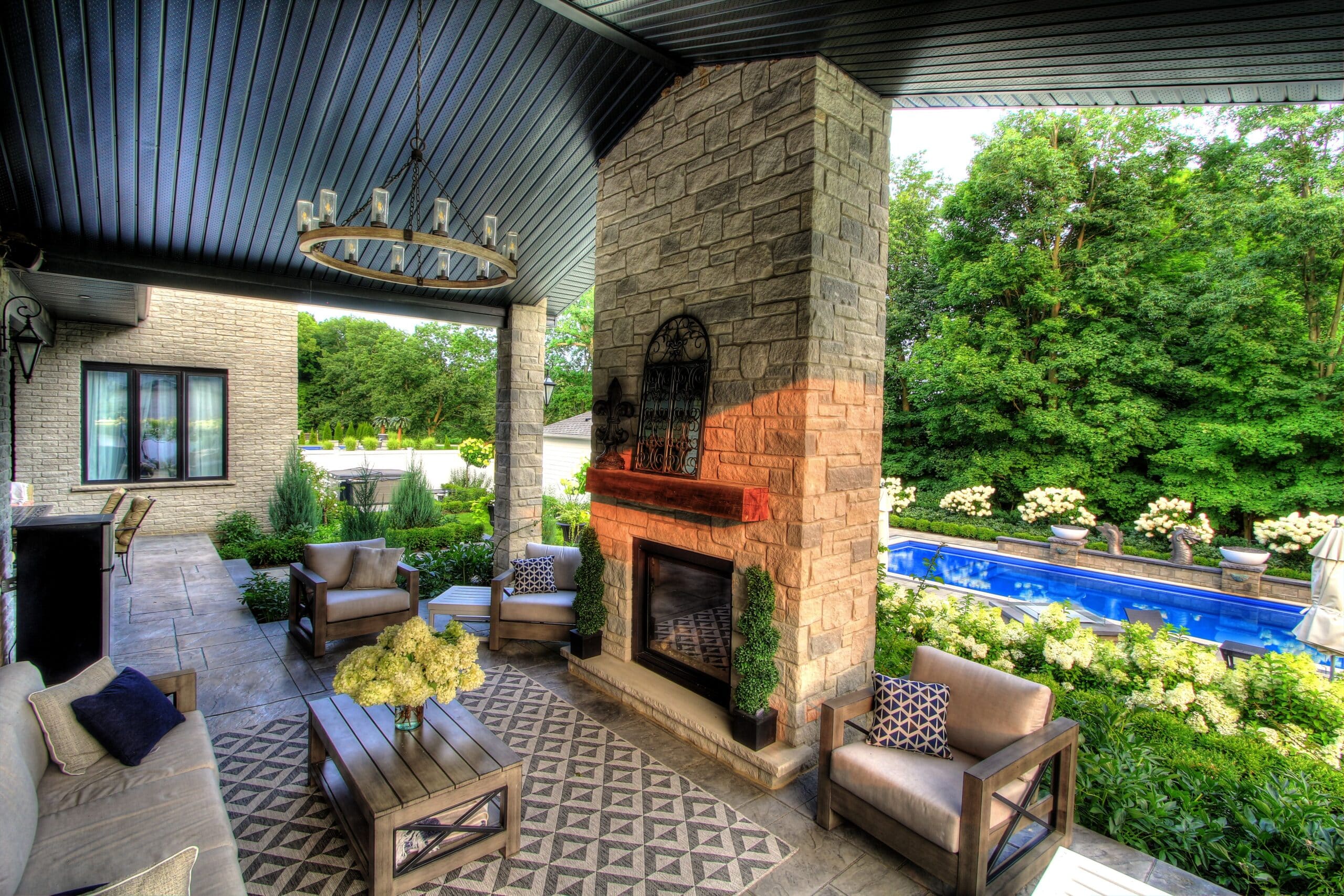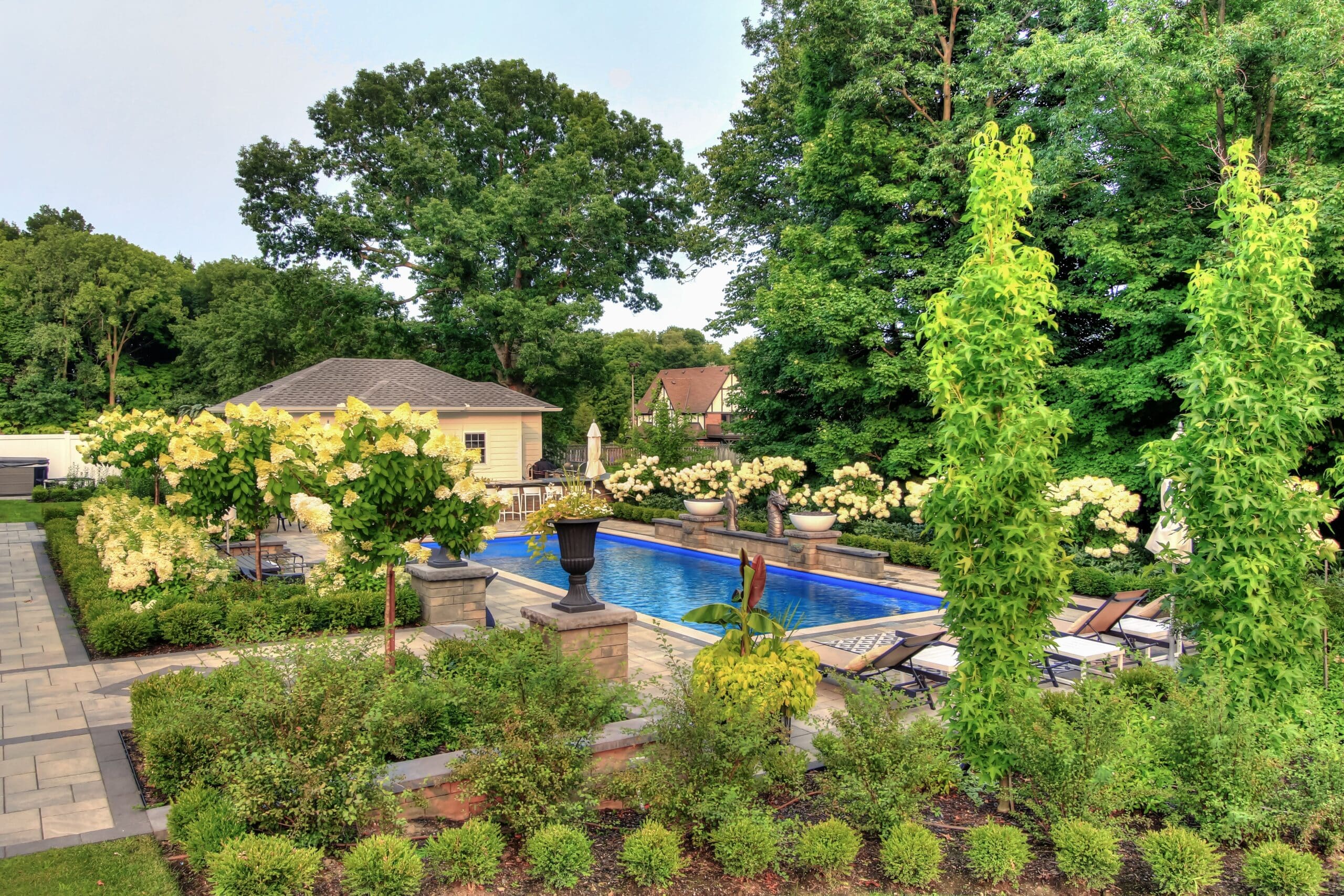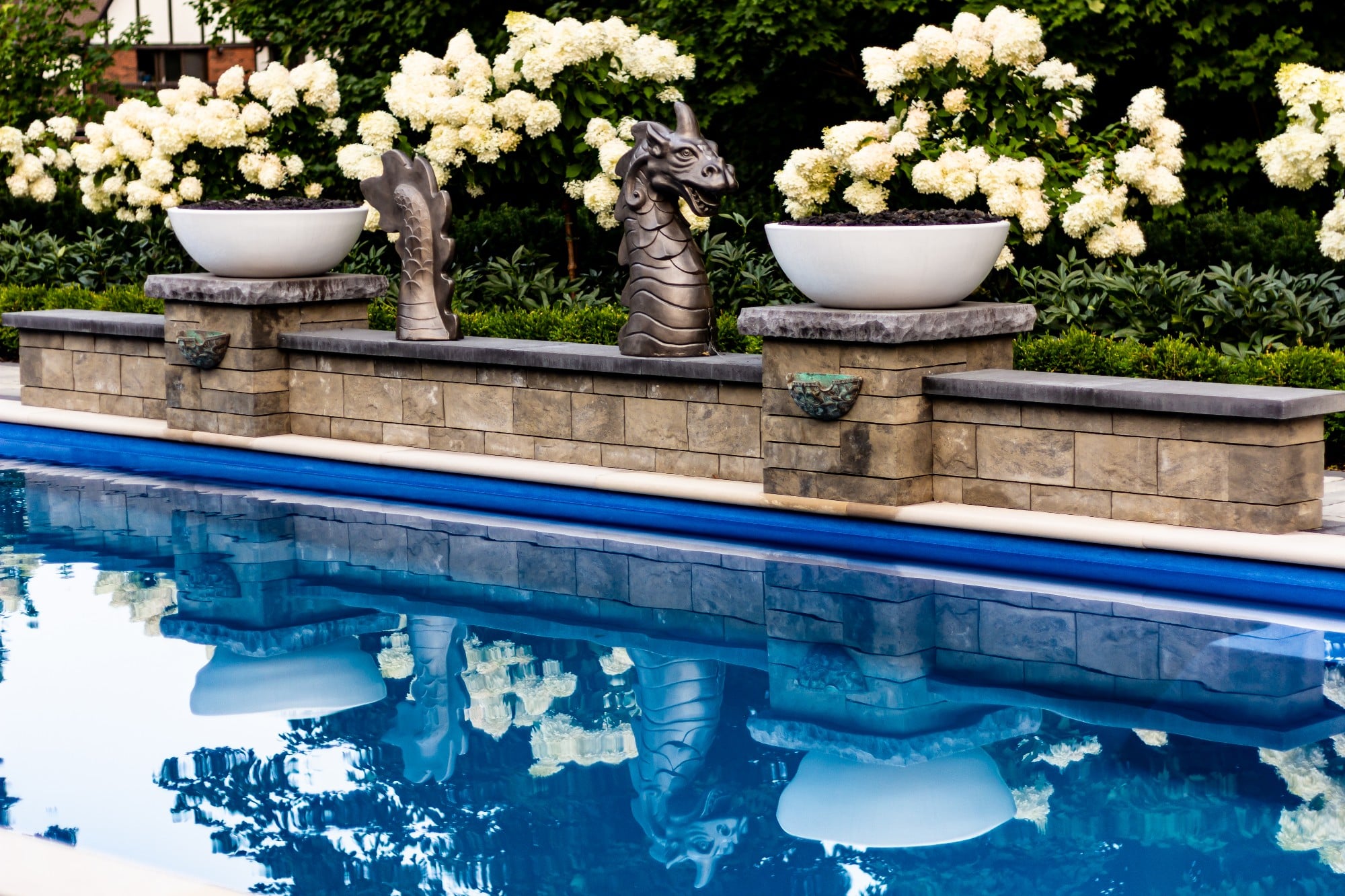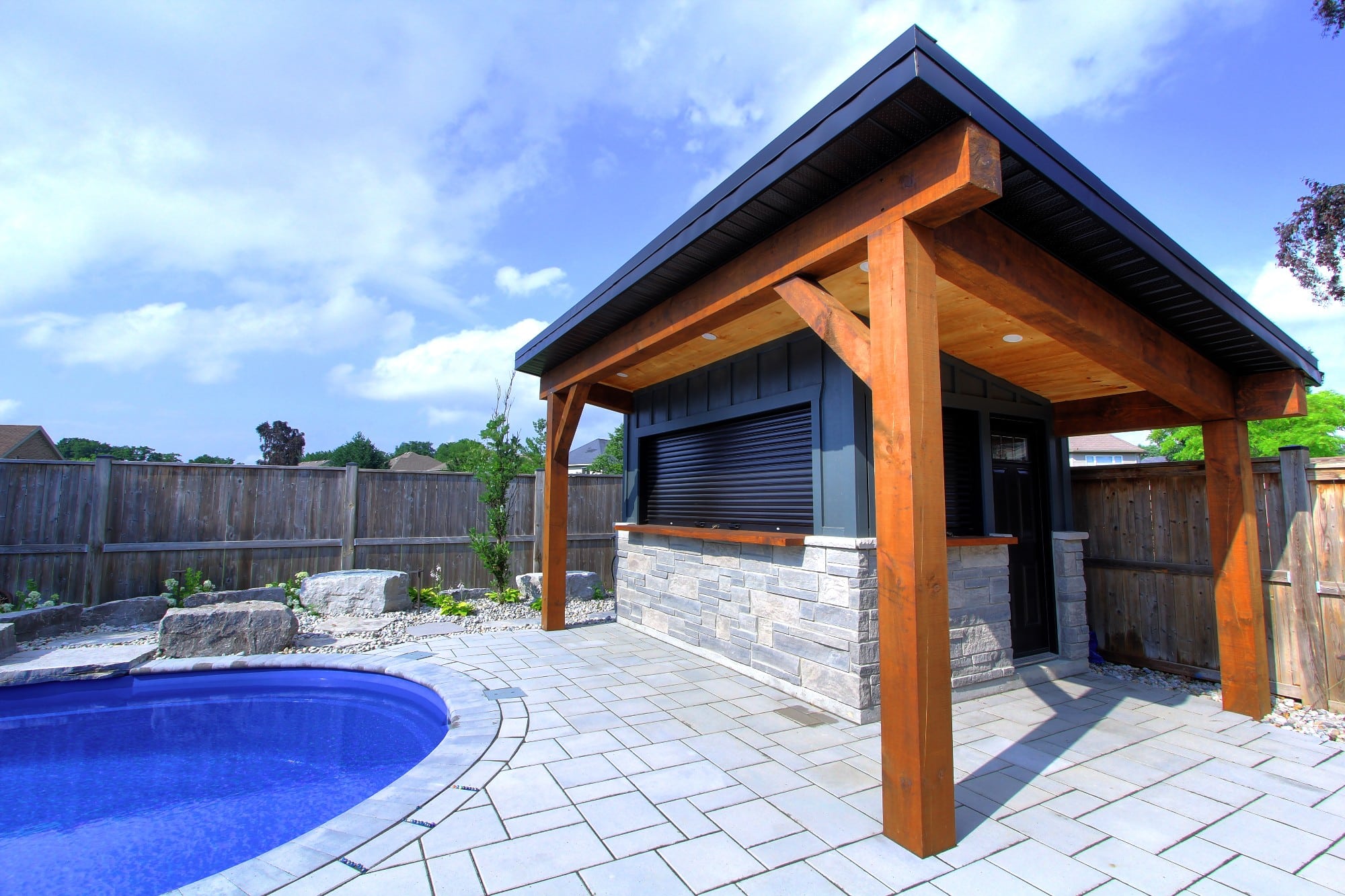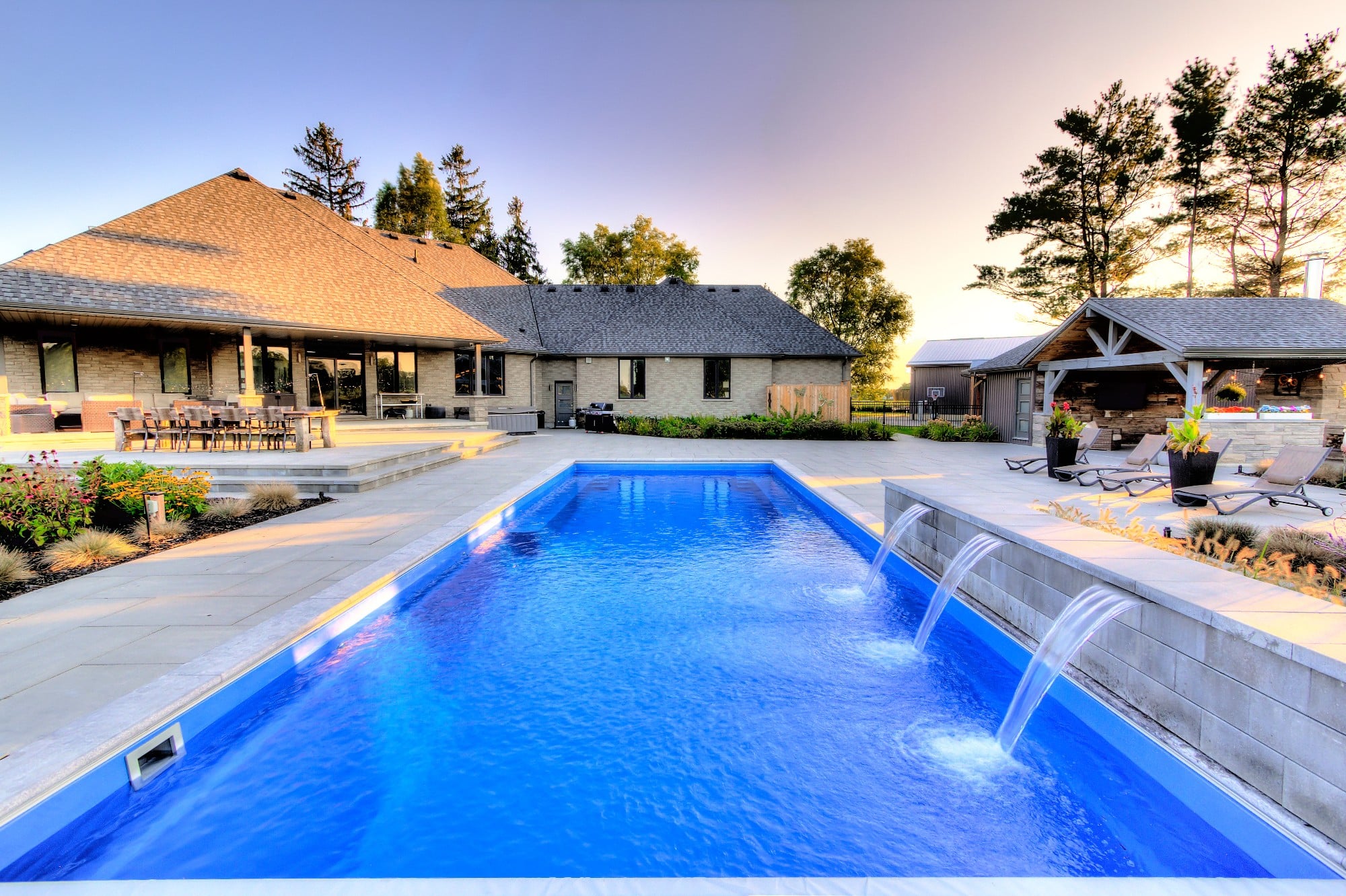Designing Your Pool Area for Safety and Durability
Creating a safe and well-maintained poolside is essential for ensuring that your outdoor space is both enjoyable and secure for everyone.
This article will cover key aspects of safety, structural integrity, and maintenance practices that are crucial for a long-lasting and accident-free pool environment.
Prioritizing Children's Safety Around the Pool
Ensuring the safety of children around the pool is paramount for any family-friendly outdoor area. Here are some essential measures to implement that will help prevent accidents and provide peace of mind for parents:
Physical Barriers:
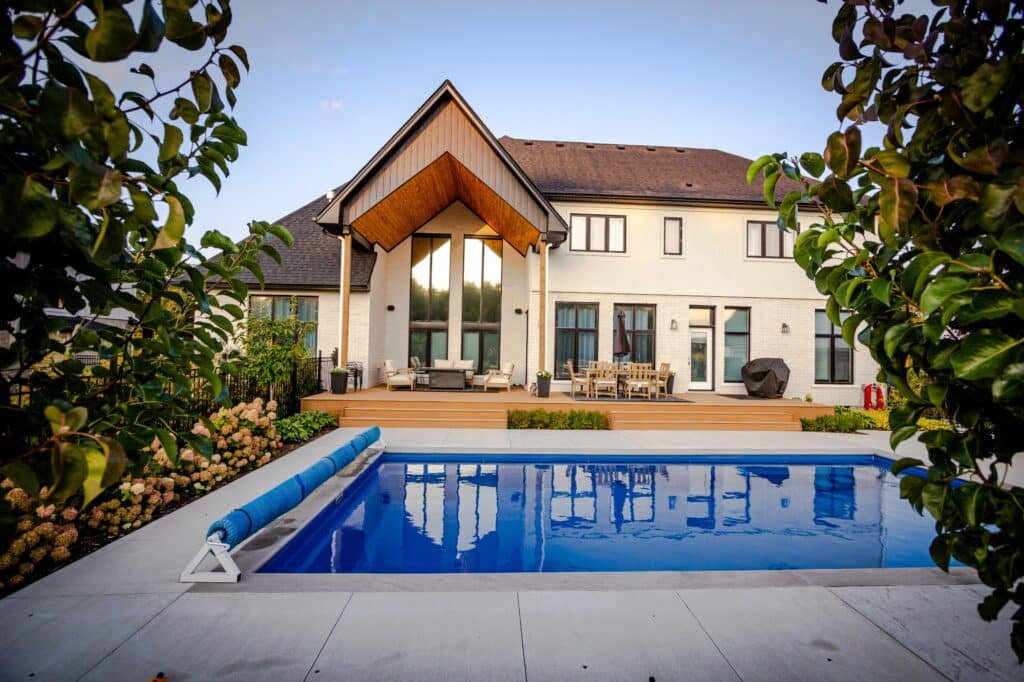
- Fencing: Install a fence at least four feet high around the pool with self-closing and self-latching gates that children cannot easily open. The design should prevent children from climbing over or crawling under it.
- Pool Covers: Use sturdy, safety-approved pool covers that can support the weight of a child if they accidentally step onto them. Ensure the cover fits snugly over the entire pool and remove any standing water from the surface after rainfall to avoid drowning hazards.
Supervision and Alarms:
- Constant Supervision: Never leave children unattended near the pool, even for a moment. Always have a responsible adult actively watching children in and around the water.
- Alarms: Install pool alarms that notify you if someone enters the pool area or the water. Consider alarms on the gate, the house doors leading to the pool, and as a wearable device for children.
Water Safety Education:
Pool safety for kids goes beyond the structural aspects. It's important to educate children about water safety to ensure they understand the potential risks and how to navigate them. Teach them proper swimming techniques, the importance of never swimming alone, and what to do in case of an emergency.
- Swimming Lessons: Enroll children in age-appropriate swimming lessons. Teaching them how to swim significantly reduces the risk of drowning and builds their confidence in the water.
- Safety Rules: Educate children about basic pool safety rules such as no running, no diving in shallow water, and always swimming with a buddy.
Emergency Preparedness:
- Rescue Equipment: Keep rescue equipment such as life rings, reaching poles, or a life hook readily available near the pool. Ensure everyone in the household knows how to use them.
- First Aid and CPR: Have a first aid kit nearby and ensure that adults in the household are trained in CPR. Quick response to an emergency can save lives.
Reducing Slips and Falls:
- Non-slip Surfaces: Use non-slip mats around the pool deck and other wet areas to prevent falls. Regularly check and maintain these surfaces to keep them in good condition.
- Clear Obstacles: Keep toys, floats, and other objects out of the pool when not in use to avoid tripping hazards.
Structured Play Areas:

- Designated Shallow Area: If possible, design the pool with a shallow end suitable for younger children. This area can provide a safer environment for them to enjoy water play under supervision.
- Play Zones: Set up designated play zones away from the pool, such as a sandbox or a swing set, to keep children entertained and safe when they are not swimming.
Implementing these measures can significantly enhance the safety of children around your pool, allowing them to enjoy the water while giving parents and guardians peace of mind. By creating a secure and monitored environment, you can ensure that the pool area remains a source of joy and relaxation for the entire family.
Ensuring Structural Integrity Around the Pool
In addition to safety, the structural integrity of your pool area is crucial for both functionality and aesthetics. Here are some key points to consider:
Decking and Paving:
- Choose materials that are slip-resistant to reduce the risk of accidents. Natural stones, textured concrete, or rubberized tiles are good options.
- Ensure proper drainage to prevent pooling of water and eliminate the risk of slipping.
- Incorporate adequate seating and lounging areas that are both comfortable and functional.
Functional Lighting:
- Install outdoor lighting to enhance safety and visual appeal during evening hours.
- Consider lighting not only the pool area but also the pathways and surrounding landscape features.
- LED lighting is energy-efficient and provides versatile options for highlighting key features or creating mood lighting.
Privacy and Landscaping:
- Create a sense of privacy by incorporating tall hedges, trees, or screening panels around the pool perimeter.
- Choose plants that are resistant to chlorine and can thrive in poolside conditions, such as palms, succulents, and ornamental grasses.
Proper Drainage:
- Ensure there is adequate drainage around the pool to prevent water accumulation that can lead to slippery conditions and structural damage.
- Incorporate graded designs and install drains that effectively channel water away from the pool and house foundations.
Durable Materials:
- Select high-quality materials that are resistant to weather, chemicals, and UV exposure.
- For decking and other structures, consider using composite materials, natural stone, or high-grade treated woods that offer longevity and require minimal upkeep.
Maintenance Practices for a Beautiful and Functional Poolside
- Routine Cleaning: Develop a regular cleaning schedule for the pool and deck areas. This includes skimming debris off the water surface, vacuuming the pool floor, and washing the deck to remove dirt and residues that can make surfaces slippery.
- Regular Inspections: Schedule regular inspections of the pool and surrounding structures to identify and address any potential issues such as cracks, mold growth, or structural weaknesses before they become serious problems.
- Chemical Balance: Regularly check and adjust the chemical levels in your pool to ensure water quality and hygiene. Incorrect chemical balances can lead to algae growth, water discoloration, and materials degradation.
- Seasonal Preparation: Take steps to prepare your pool for different seasons, especially if you live in a region with harsh winters. This might include winterizing your pool at the end of the swimming season by lowering water levels, adding antifreeze, and covering the pool securely.
Leveraging Technology for Pool Maintenance
- Smart Pool Monitors: Consider investing in smart pool monitoring systems that can track water quality, temperature, and filter status. These systems can send real-time updates to your smartphone, making it easier to maintain optimal pool conditions.
- Automated Systems: Automated pool cleaners and chemical dispensers can reduce the time and effort required for pool maintenance. These systems provide consistent care that can extend the life of your pool.
Conclusion: Building a Safe and Sustainable Pool Environment
By prioritizing safety, structural integrity, and regular maintenance, you can ensure that your pool area remains a secure and appealing feature of your home for years to come. Implementing these strategies will not only protect your investment but also provide peace of mind.
Ensure your pool area is as safe as it is beautiful by consulting with the experts at Countryside Landscape & Pools.
Contact us today to learn more about our safety and maintenance services and how we can help you enjoy a worry-free pool experience.
[Continue to the next article in our series to explore innovative ways to expand your living space with outdoor structures.]


